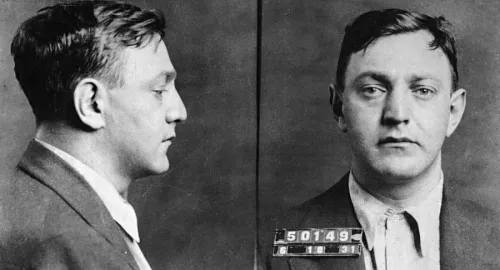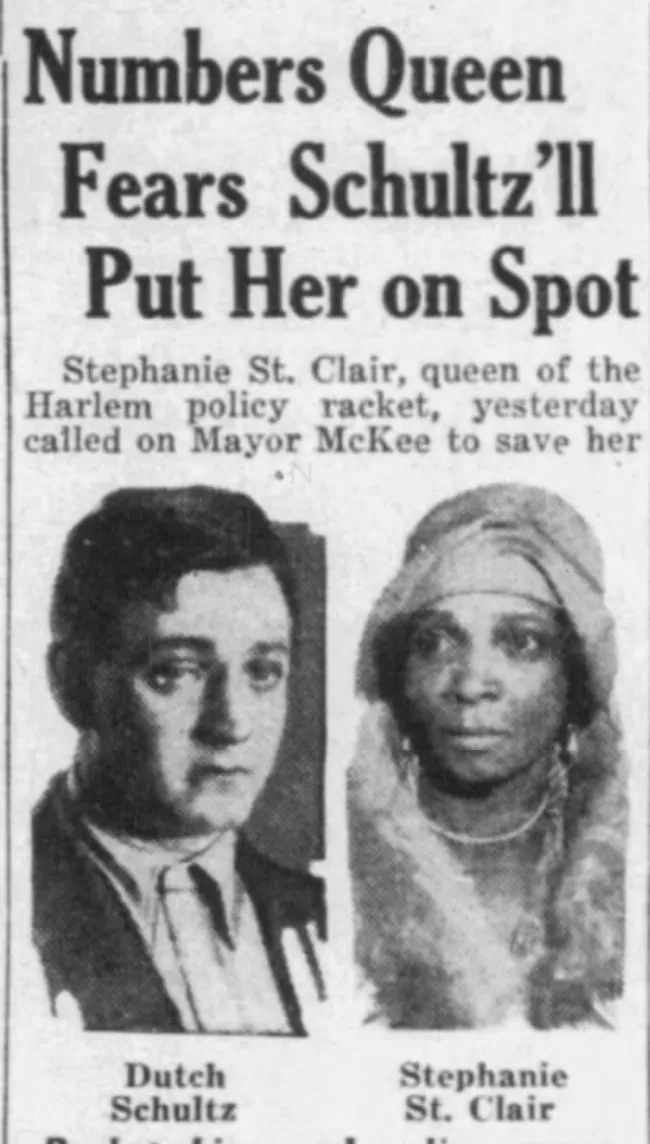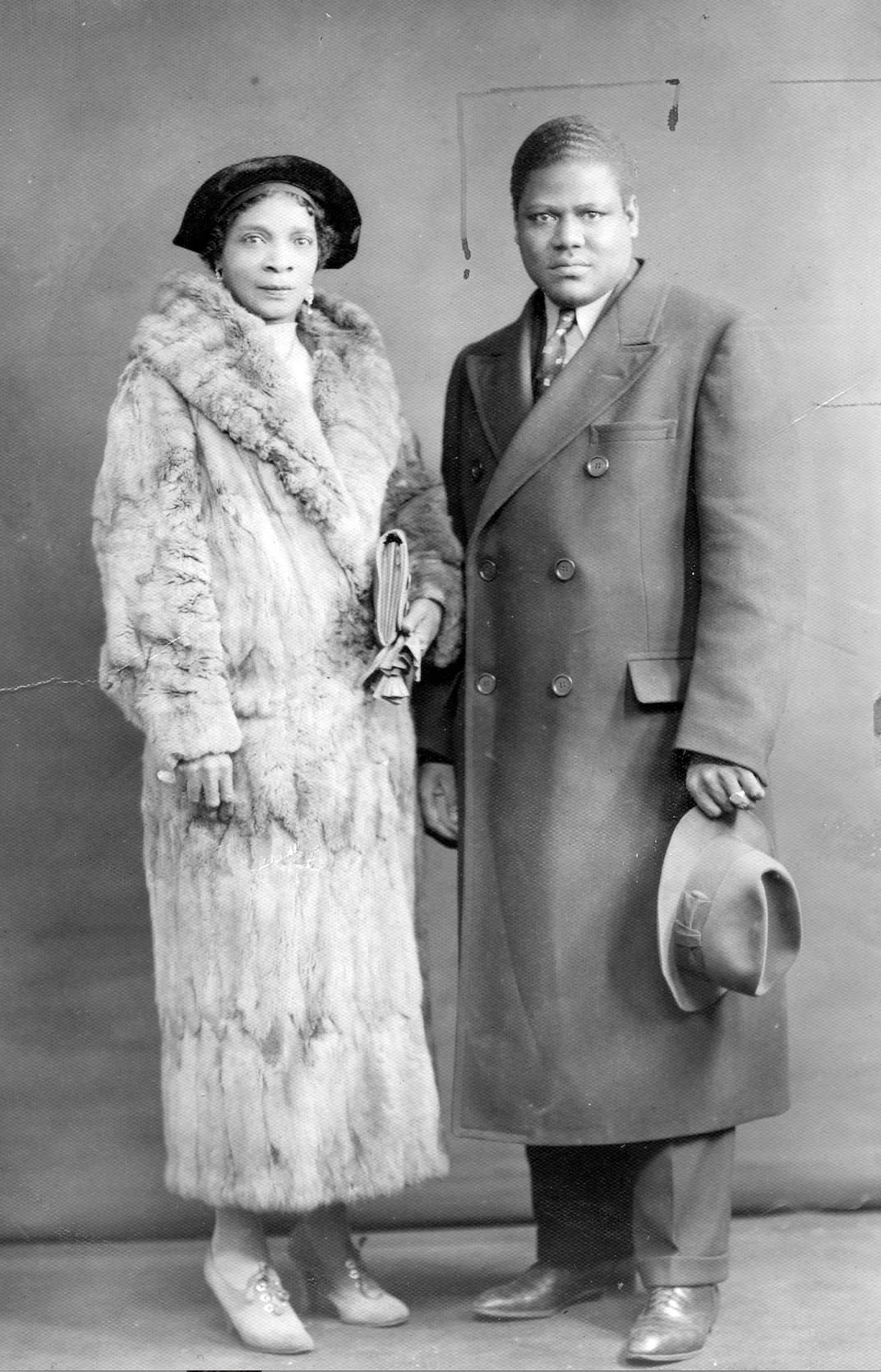Stephanie St. Clair, Harlem’s ‘Numbers Queen,’ Dominated the Gambling Underground and Made Millions
In the 1930s, the enigmatic figure ran an illegal lottery while championing New York City’s Black community
:focal(1262x1069:1263x1070)/https://tf-cmsv2-smithsonianmag-media.s3.amazonaws.com/filer/f1/cb/f1cbb365-fc59-4c6d-8b20-66c22d2bc6ef/stephanie-st-claire.jpeg)
On the eve of the Great Depression, with Prohibition in full swing, everyone in Harlem knew the name Stephanie St. Clair, the “queen of numbers.” A gangster, civil rights advocate, fashionista and businesswoman, she took on one of the biggest crime bosses of the era—and lived to tell about it.
Far from hiding in a criminal underworld, St. Clair was also outspoken, advocating in the press for immigrant rights and against police brutality. When necessary, she told suitors to “please not annoy me. I, Mme. St. Clair, am not looking for a husband or a sweetheart. If [you] do not stop annoying me, I shall publish [your] names and letters in the newspaper.”
As historian LaShawn Harris, author of Sex Workers, Psychics, and Numbers Runners: Black Women in New York City's Underground Economy, puts it, St. Clair was bold, audacious and flamboyant: “She was a risktaker, … willing to challenge normative ideas about gender and race.”
St. Clair lived in an apartment at 409 Edgecombe Avenue, a building home to some of Harlem’s most prestigious residents, including W.E.B. Du Bois, future Supreme Court Justice Thurgood Marshall and painter Aaron Douglas. According to Edgecombe neighbor Katherine Butler Jones, the numbers queen was just as beguiling as some of the property’s more “respectable” tenants. Jones later recalled seeing “Madame Stephanie St. Clair breezing through the lobby with her fur coat dramatically flowing behind her. She had a mystical aura about her, and she wore exotic dresses with a colorful turban wrapped around her head.”
The only reason we know as much as we do about St. Clair is because she made a point of telling us, taking out newspaper ads to address her foes, from unworthy suitors to the police. Though her early life is shrouded in mystery, Harris suggests that St. Clair was born in Grand-Terre, one of the five Caribbean islands of Guadeloupe, between the mid-1880s and 1890s.
/https://tf-cmsv2-smithsonianmag-media.s3.amazonaws.com/filer/52/e6/52e6e044-2713-4674-8b07-65bf026b93f1/screen_shot_2021-05-18_at_40646_pm.png)
Alternatively, St. Clair may have been born in France or Martinique, an island south of Guadeloupe. Per Harris’ book, journalist Henry Lee Moon reported that she “vehemently” denied the latter possibility, steadfastly maintaining that she was, instead, of “French European” heritage.
This anecdote epitomizes the difficulty of untangling the real St. Clair from the one recorded in print. The two often contradict each other, as she carefully built up her own mythology.
On July 22, 1911, at the age of either 13 or 23, St. Clair set out for Terrebonne, Quebec, just outside of Montreal. History doesn’t record what she did while in Canada, but Harris hypothesizes that she may have been employed as a domestic worker. In 1912, she boarded a ship bound for New York City.
St. Clair established her Harlem numbers business in the early or mid-1920s. How she raised the funds to get started is unclear, but it’s possible she won big at the numbers herself, or funneled money from a successful civil suit into her enterprise.
Either way, St. Clair used these funds to build a gambling empire. She and other “bankers” ran illegal lotteries, “staffing numbers bank headquarters with a group of controllers, clerks, messengers, and numbers runners,” writes Harris. Every morning, runners (St. Clair employed up to 50) collected bets on “policy slips” that were then passed on to headquarters. Participants usually knew the identity of their banker but no details beyond that.
When the day’s winning number came in (usually chosen by combining certain figures generated by financial institutions), lucky gamblers received their due. But bankers like St. Clair were the true winners of the game, racking in thousands in betting fees. In 1930, one journalist estimated the numbers queen’s “personal fortune [at] around $500,000 cash”—almost $8 million today—and wrote that she owned “several apartment houses.”
/https://tf-cmsv2-smithsonianmag-media.s3.amazonaws.com/filer/40/d2/40d2b7b4-113b-42af-bf37-52b8ab31df12/city_aids.jpg)
In Playing the Numbers: Gambling in Harlem Between the Wars, authors Shane White, Stephen Garton, Stephen Robertson and Graham White argue that the numbers game was “the Black business” of the early 20th century. Cosmopolitan Black communities across the country, from Chicago’s South Side to Harlem, played numbers in different ways. The game was massively popular across Northern cities.
At a time when Black Americans were often denied bank loans and remained skeptical of white-controlled banks, the illegal numbers game, or “policy,” as it was also known, was “akin to putting money in the stock market,” says Robertson. “Many saw it as an investment, and it was often just as risky as putting money in the stock market back then.”
Harlem itself had multiple iterations of the numbers game. One of the earliest and most respected versions was a lottery that used daily numbers pulled from the New York Clearing House. Participants would place small bets (for context, a nickel was considered a big bet) on a number between 1 and 999. Organizers then generated the winning number based on two figures: the total daily clearances among member banks and the Federal Reserve Bank credit balance.
Playing the Numbers cites “the last Monday before Christmas 1930” as an example of how the game worked, noting that “the clearings were $589,000,000 and the balance was $116,000,000; hence the winning number was 896.” Anyone lucky enough to bet on 896 that day received a payout. The kings and queens collected all the rest of the money, and the next day, the game restarted with new bets and a new winning number.
St. Clair’s number game, as well as the majority of operations run by New York bankers, used the Clearing House’s numbers until the late 1930s, when the financial institution stopped announcing its daily figures. “After that, many bankers used the mutual totals paid out on horse races,” explains Harris. Other bankers used figures pulled from the New York Stock Exchange, or even the Cincinnati Clearing House.

Though technically illegal, Robertson points out that contemporary observers “often draw much too clear a line between illicit and licit businesses. In the ’20s and ’30s, both [legal and illegal businesses] were paying off the police.” He adds, “The reason numbers was the biggest Black business of the early 1900s is because Black Americans found it so hard to get involved in other legal businesses.”
St. Clair wasn’t the only banker cashing in on the city’s gambling underground. She and Casper Holstein, a prominent numbers king and philanthropist, are often cited as “resurrecting illegal gambling in Harlem after several years …,” according to Black Past. Holstein’s operation, which included some nightclubs and other legal businesses, was so lucrative that he was rumored to be making $12,000 a day at his height toward the end of the 1920s.
While male bankers dominated the numbers game, numerous enterprising women strongarmed their way into the industry. Alberta Greene, nicknamed the “policy queen of South Jamaica, Queens,” by the press, employed five to ten collectors and several runners before her 1935 arrest. Women also worked as employees at numbers banks. During her teenage years, singer Ella Fitzgerald actually worked as a Harlem numbers runner.
The Harlem Renaissance often dominates scholarship and articles about the neighborhood in the early 20th century. But Robertson asserts that “numbers was far more important to far more people.” Indeed, it was important and lucrative enough to start a gang war between white mobsters moving in on the established Black kings and queens of Harlem’s numbers network. And no fight was fiercer than that of St. Clair and Dutch Schultz.
St. Clair didn’t mince words in her declaration of war on Schultz. “[I’m not] afraid of Dutch Schultz or any other living man,” she said. “He’ll never touch me! I will kill Schultz if he sets foot in Harlem. He is a rat. The policy game is my game.”
A Bronx native, Arthur “Dutch Schultz” Flegenheimer was a notorious bootlegger with more than 100 underlings who enforced his rackets. New York State’s special prosecutor, Thomas E. Dewey, viewed the criminal as public enemy number one, even writing in his autobiography that he “regarded it as a matter of primary importance to get Dutch Schultz.”

When the Great Depression set in, Schultz set his sights on Harlem’s numbers game. He gave Black and Latino policy operators two options: relinquish their numbers business to him or continue to operate while paying him a percentage of the profits. With powerful politicians like Tammany Hall leader James Hines on his payroll, Schultz could assault or kill anyone who rebuffed his offer with impunity.
St. Clair moved swiftly against Schultz, organizing the remaining small Black policy owners in her fight against “the Dutchman.” She and her allies violently confronted white storeowners who were collecting bets on Schultz’s behalf, smashing cases, destroying policy bets and ordering their adversaries out of Harlem. St. Clair also took out ads encouraging Harlemites to “play black” and only place numbers bets with Black organizers.
Schultz quickly retaliated. He started calling St. Clair’s home to threaten her. He kidnapped and murdered her men. He even placed a contract on her life, forcing St. Clair to hide in “a cellar while the super, a friend of mine, covered me with coal,” as she later recalled. Another time, Schultz sent an underling to intimidate St. Clair. But she gained the upper hand, pushing the man into a closet, locking him in and proceeding to tell her body guards to “take care of him.”
The pair’s standoff finally ended in October 1935, when Schultz was unceremoniously gunned down while sitting on the toilet at the Palace Chophouse in Newark, New Jersey. (The Commission, a ruling body of several mafia heads, ordered the hit after a dispute with Schultz.) Wanting to get the final word, St. Clair immediately sent a deathbed telegram to her fallen enemy. Signed “Madame Queen of Policy,” it read, “As ye sow, so shall you reap.”
After her war with Schultz came to a close, St. Clair’s notoriety continued to grow. In 1936, her nonlegal marriage “by contract” to Bishop Amiru Al-Mu-Minin Sufi Abdul Hamid—an eccentric, controversial, anti-Semitic race activist popularly dubbed “Black Hitler”—dominated headlines of Black newspapers across the country.
Hamid claimed to have been born in the shadows of the Egyptian pyramids. (In fact, he was likely born Eugene Brown in Lowell, Massachusetts.) A labor activist, he advocated for Black separatism while “wearing a turban wrapped around his head, a black and crimson lined cape, a green velvet blouse, and black riding boots,” writes Harris.

According to historian Murray Friedman’s What Went Wrong?: The Creation & Collapse of the Black-Jewish Alliance, Hamid “courted the German-American Bund and the Nazi-like Christian Front.” He organized violent boycotts of Jewish-owned establishments and advocated for businesses to instead hire Black employees.
In their contract, the 40-something St. Clair and the 30-year-old Hamid agreed to a one-year trial period. If the pair decided not to continue their relationship at that point, they could terminate the contract. If, on the other hand, they remained certain of their feelings for each other, they could hold a legal ceremony.
The couple’s union soon imploded. On January 19, 1938, St. Clair fired three bullets at Hamid after learning of his affair with a “conjure woman from Jamaica.” The closest she came to hitting him, according to Hamid, was nicking his teeth. Convicted for the attempted murder, St. Clair was sentenced to two to ten years at a New York state prison. During sentencing, presiding Judge James G. Wallace fittingly concluded, “This woman [has] been living by her wits all of her life.” As St. Clair was led out of the courtroom, she reportedly “kissed her hand to freedom.”
Following her release from prison, the details of St. Clair’s life become hazy. A 1943 article in the Black New York Amsterdam News says she visited relatives back in the West Indies before returning to live out her days in “seclusion,” likely in Harlem. Speaking with historian Alexis Coe, host of the “No Man’s Land” podcast, Harris traces St. Clair’s last address to a Long Island psychiatric facility where, sometime in 1969, her life came to an end.
In her later years, St. Clair made a “conscious effort not to be in the public eye,” says Harris. “She probably didn’t go out like she wanted. Or maybe she did. But she didn’t die with money. She had kind of a rags to riches story, [then] riches to rags.”
Harris questions whether St. Clair was really all that different from other industrial titans of the era. “[St. Clair] should be included in histories of Black business and Black entrepreneurship,” the scholar adds.
At a time when numbers was by far the most lucrative business enterprise available to Black Americans, St. Clair rose through the ranks to establish her operation as one of the top numbers games in Harlem, and perhaps even in the country. Through numbers, St. Clair became an advocate for Black businesses and rights. In her fight against Schultz, she championed the “buy Black” cause, encouraging Harlemites to support Black kings and queens. She organized a Caribbean aid society that supported immigrants coming to New York.
Her success as a numbers queen allowed St. Clair to make inroads into legal enterprises, including buying several apartment buildings. Like a true businesswoman, many of these activities also helped support her numbers operation. By advocating for Black businesses and voting rights, she gained legitimacy and community support.
Asked about St. Clair’s legacy, Robertson echoes Harris, saying, “You know, what might be even more radical than calling her a female gangster is calling her a businesswoman.”
/https://tf-cmsv2-smithsonianmag-media.s3.amazonaws.com/accounts/headshot/Sarah_Durn_Headshot.jpg)
/https://tf-cmsv2-smithsonianmag-media.s3.amazonaws.com/accounts/headshot/Sarah_Durn_Headshot.jpg)